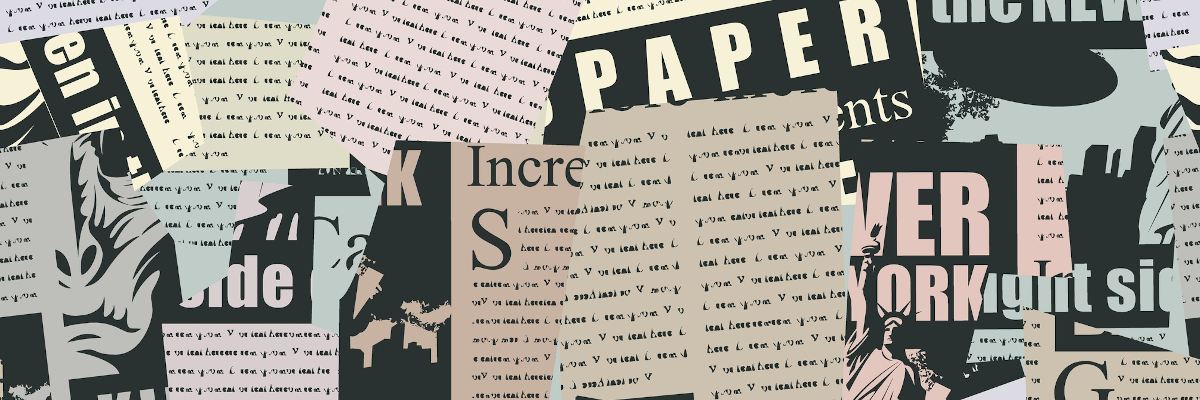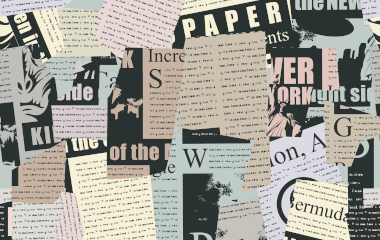
“Rav Yehuda said in the name of Rav: When Moses ascended on high, he found the Holy One, Blessed be He, sitting and tying ketarim, crowns, on the letters of the Torah[1]. Moses said before G-d: Master of the Universe, mi meakev, who is preventing You [from giving the Torah without these additions]? G-d said to him: There is a man who is destined to be born after several generations, and Akiva[2] ben Yosef is his name; he is destined to expound mikol kotz v’kotz, from each and every thorn, mounds upon mounds of halakhot” (Menachot 29b).
In the formulation of the Midrash, Moshe’s question, mi meakev, is undoubtedly a play on the name Akiva, adding a beautiful literary layer to the story. That he is identified as the son of Yosef, and not that of his “namesake” Yaakov, is also no coincidence. It was the biblical Yosef who charted new territory, transporting the teachings of his home to a foreign milieu, demonstrating that tradition and change can, actually must, go hand in hand. His “son” Akiva was able to see Torah where no one before him could, and it is upon his shoulders that so much of our tradition rests. Both Yosef and Akiva saved Judaism in a time of crisis: Yosef kept the family alive both physically and spiritually in Egypt, and Akiva’s herculean efforts at teaching Torah ensured that Judaism would survive the Hadrianic persecutions.
Fascinatingly, a sefer Torah remains kosher even if it is missing these crowns. Hence, Moshe could not understand what was so important about them that G-d Himself was tying them on the letters and delaying the giving of the Torah[3]. G-d told him, Moshe, you are correct; the crowns are not needed now, but 1,600 years hence, a great man, Akiva, will build mountains and mountains of Torah from these crowns.
Actually, there is a most significant shift in the wording of the Midrash. G-d tells Moshe that Akiva will be doresh, will expound, al kol kotz v’kotz, literally “on every thorn and thorn”, mountains and mountains of Jewish law. G-d was placing ketarim, crowns, on the letters, but Rabbi Akiva was expounding the kotzim, the thorns that adorned the letters. Is a kotz not the opposite of a keter? A crown adorns our heads, adding beauty, wealth and power to those who merit wearing one. A thorn is ugly, is of no value, and inflicts pain, and more often than not is found in our feet.
The kotzim are symbolic of the life of Rabbi Akiva. Rabbi Akiva lived at a most difficult time in Jewish history; he witnessed the destruction of the Temple and was martyred by the Romans during the Hadrianic persecutions. On a personal level, his father-in-law opposed his marriage and disinherited them. With her encouragement, he left his wife for 24 long years. Yet he was doresh kol kotz v’kotz, he continued to seek and find new meaning from every letter in the Torah[4]. Each and every affliction was a price worth paying to remain faithful to his heritage. The sharper and more painful the thorns of the Romans, the greater Rabbi Akiva’s dedication to Torah. It was specifically as he was being tortured to death that Rabbi Akiva was doresh, expounded, that the command to “love G-d with all our soul” means "even if He is taking your soul" (Brachot 61b).
Strikingly, it is Rabbi Akiva who is the eternal optimist of the Jewish people. He could laugh upon seeing foxes emerge from the ruined Temple (Makkot 24b) and almost rejoice at being able to give up his life for G-d. Despite having lost 24,000 students, he continued to teach—and it is a good thing he did. “And the world was desolate until Rabbi Akiva came to the leaders in the South and taught them: Rabbi Meir, Rabbi Yehuda, Rabbi Yossi, Rabbi Shimon [bar Yochai], and Rabbi Elazar ben Shamua. They revived Torah at that time” (Yevamot 62b).
Who wouldn’t want to meet such person? Moshe is granted his wish, but he gets more than he bargained for. “He went and sat at the end of the eighth row. He did not know what they were saying. His strength waned.” Moshe cannot follow Rabbi Akiva’s shiur, in fact he has no clue what they are talking about—which is likely why the Gemara does not tell us what they were discussing.
G-d had warned Moshe that after his death, the people would abandon Torah. And Moshe, or so he thought, was witness to such abandonment (see Devarim 31:16). After all, “everything that a seasoned student will teach in the presence of his teacher was already revealed to Moshe at Sinai” (Yerushalmi Peah 2:4). If Moshe could not follow the discussion, it must mean that it is not authentic Torah. Moshe feared the Torah had been corrupted beyond repair and tasash kocho, his strength departed from him.
Moshe did not (yet) understand that while every future insight may be based on the principles he himself received at Sinai, every generation must apply those principles to changing circumstances. If the Torah is a guidebook to life, it is impossible that people living over 1,500 years apart would be able to follow the same Torah discussion.
Just as Moshe could not understand Rabbi Akiva, Rabbi Akiva would be lost in today’s Beit Midrash. What would he understand regarding a shiur on the use of technology on Shabbat, a discussion regarding the permissibility of inviting one who drives on Shabbat for a Friday night meal? He surely would not be able to answer the question of whether one should say Hallel on Yom Ha’atzmaut, or whether one must make a shechiyanu when buying a car.
And even if dealing with a familiar topic, no one generation can exhaust all understanding on any given topic, with each generation adding its own unique insights to Torah. These insights will often be unintelligible to prior generations, even to a Moshe Rabbeinu, and even though the source of the law is a halacha leMoshe MiSinai. If we are to have a Torat chaim, a Torah that speaks to every generation and addresses every important aspect of life, it can be no other way.
“When they came to one matter, his students said to him: My teacher, from where do you derive this? Rabbi Akiva said to them: It is a halacha leMoshe MiSinai, a law transmitted to Moses from Sinai. His [Moshe’s] mind was put at ease.” At this point, Moshe finally understood that the Torah is “like an overflowing spring” where each generation builds on the accomplishments of the previous one. He was now ready to be the one to bring the Torah to the Jewish people.
[1] In our last post, we discussed but one aspect of the story of Moshe Rabbeinu being transported to Rabbi Akiva’s Beit Midrash. We continue the discussion above.
[2] I have often wondered why it is that Rabbi Akiva is often referred to in the Talmud as Akiva, and not Rabbi Akiva. I have surmised that it is related to the fact that he became a rabbi much later in life; it is hard to start calling someone “Rabbi” at the age of 64. Perhaps, though, it is related to the fact that G-d Himself referred to him as Akiva—there is no place for honorifics in the presence of the Almighty—and thus, Akiva reflects the fact that he towered above his colleagues and was closest to the Divine.
[3] I cannot help but wonder how this Midrash understands the lead-up to the chet ha’egel. Our Sages understood that it was delay of a few hours of Moshe returning to the Israelite camp that caused the people to build the golden calf. Is it possible that waiting for these crowns caused that delay? The implications of such an approach, if indeed it is a legitimate one to take, are far-reaching.
[4] It was Rabbi Akiva, for example, who derived great teachings from the seemingly superfluous word et, even as others gave up the endeavour.



